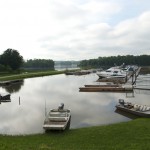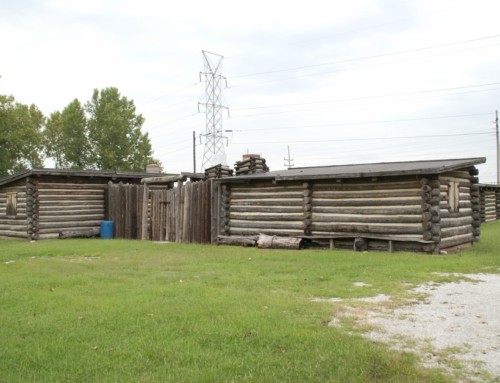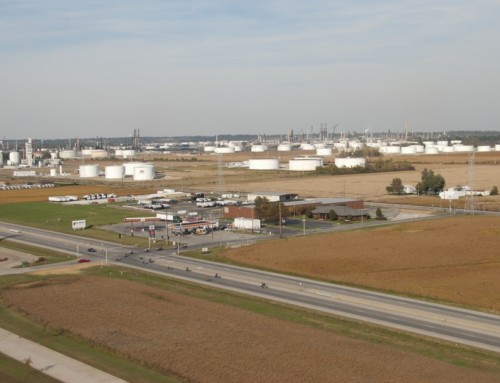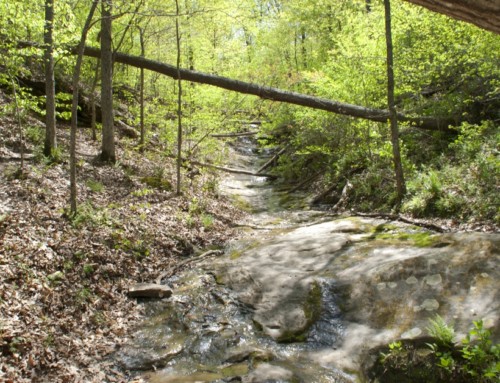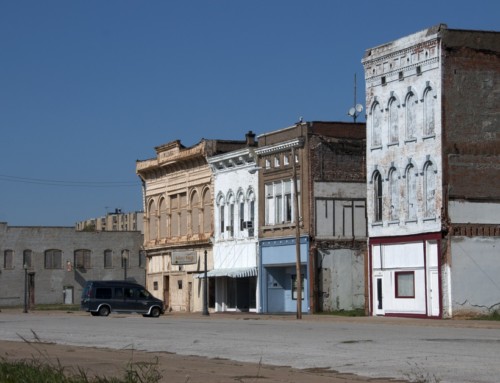Introduction
Andalusia is a quiet rivertown with a long history.
Visitor Information
Direct your questions to Visit Quad Cities (563.322.3911).
History
What we call Andalusia today was once a favorite hunting area for Sauk and Meskwaki Indians. After they were forced out, Captain B.W. Clark, a Virginia native, made a land claim and built a cabin. At that time in 1832, his nearest European neighbors were Joshua Vandruff on Vandruff Island (10 miles away) and Erasmus Dennison at New Boston (35 miles away). Clark began ferry service across the river, which quickly became a busy crossing point. Andalusia had ferry service for decades, with boats powered by means that ranged from sweeps and pike poles, to horses, steam engines, and gas engines.
Clark sold his 160 acres in 1836 to a group of investors that included Colonel James Stephenson, S.W. Hamilton and Samuel Whiteside, all whom had recently lived in Galena. They platted a village they called Rockport and sold lots to optimistic elites on the east coast who had never seen the land. It was a losing proposition. The village was never developed and the land was later sold for back taxes.
Jonathan Buffum built a grist mill in the area in 1841. A trip to the nearest mill before Buffum’s arrival could take area farmers up to three weeks in their ox-cart-powered teams. Buffum’s mill was entirely self-service. Farmers brought their grains to it and ground it up themselves.
Napoleon Bonapart Buford of Stephenson (now Rock Island), purchased the old Rockport claim. In 1845, his wife, Katherine, suggested renaming it Andalusia, in honor of the Spanish province. When Buford laid out the village of Andalusia, he stuck more or less to the original Rockport plat.
Another early European in Andalusia was Samuel Kenworthy, who moved here in the late 1840s. His family had left England a few years earlier, natives of the Manchester area where a lot of clothing was manufactured, which explains why the Kenworthys had several generations of weavers in their family. They came to the township to build a carding mill, but typhoid fever hit the family hard (Samuel lost a brother) and the survivors ended up opening a store near the river instead. Samuel’s father went out to California during the gold rush and made pretty good money supplying goods to prospectors, then returned to Andalusia two years later.
In 1854, the entirety of the village was three houses, two warehouses, a blacksmith, and a wagon shop. Area farmers did well with wheat for a short time. Later, the region’s clay, limestone, and coal deposits attracted some businesses. All in all, though, Andalusia stayed pretty small, especially after the Civil War as river traffic declined and the village had horrendous roads into the Tri-Cities (Moline, Rock Island, and Davenport). Transportation on the Illinois side was so unreliable that Andalusians took the ferry to Buffalo, Iowa, then rode a train to Davenport.
By the 1870s, Andalusia had about 500 residents and a mix of businesses that included a milliner’s shop, a harness shop, a planing mill, a cheese factory, a pottery, lumber yards, and a couple of hotels. When the railroad built east of town, it nearly finished off commercial shipping on the Mississippi for the area.
A decade later when Andalusians decided to incorporate as a village, the major agricultural crops were dairy products and fruit trees. The area also had a button factory and a few commercial fishermen. During the Depression, many residents credited their survival to living near the Mississippi River. Clamming, fishing, ice harvesting, and trapping were all important to the economic survival of residents.
Bill Bischoff remembered how important the Mississippi was to him:
Of course when we were growing up, all our entertainment was river oriented, because Andalusia is a river town: camping in the woods, fishing, clamming. River lore has always been a part of our lives.
As a child in the 1920s, he knew a river that he believed was cleaner than today’s:
You could dip an oar in the water and see it a foot and a half down. We drank from the water and we didn’t know what garbage and sewage was. It was a fun time to live. (both quotes from Life on the River…In Andalusia, Illinois: A History, Edited by Mary Shovar; 1983)
Andalusia didn’t have great road connections, especially in spring. Rodney B. Heinze remembered a spring in 1928 when he and his father had to leave the house by 3am to give them enough time to walk to Milan to catch the 6am streetcar to Rock Island. Rodney was going to Franklin Junior High School, his father to a job at the Farmall Works factory. They had to do this for two weeks until the “black gumbo” road became more navigable.
Andalusia was finally connected to the Quad Cities via a paved road in the 1930s, about the same time that electricity arrived. After World War II, the village grew into a bedroom community, from just 265 residents in 1940 to 1,178 in 2010.
During the record 1965 flood, the Mississippi spread to Highway 92, and many of the houses in town took on several feet of water. Andalusia today is still pretty much a bedroom community; most residents commute to jobs in places like Muscatine or the Quad Cities. It’s also still very much a river town. The marina is a busy place in summer, especially on weekends.
Exploring the Area
Parks Along the Mississippi River
There’s a small riverfront park at Andalusia Harbor (1st St. at the Mississippi River) that is good for picnicking and taking it easy. You can also put in a canoe or kayak at Andalusia Harbor and follow a 2 ½ mile paddle trial that explores the backwaters and islands of Andalusia Slough.
Two miles west of the village, Andalusia Slough Recreation Area (563.263.7913) has a boat ramp and nice places for shore fishing.
Sports & Recreation
Snowstar (9500 126th St. W.; 800.383.4002) offers a place to test your skiing, snowboarding, and snowtubing skills. In summer, you can take a zipline tour through the hills.
**Looking for more places to visit along the Mississippi River? Check out Road Tripping Along the Great River Road, Vol. 1. Click the link above for more. Disclosure: This website may be compensated for linking to other sites or for sales of products we link to.
Where to Sleep
Camping
Andalusia Slough Recreation Area (563.263.7913) has 16 basic camping sites in a narrow strip of land close to the highway and next to the river.
Resources
- Andalusia Township Library: 503 2nd St. W.; 309.798.2542
- Post Office: 124 2nd Ave. E.
Where to Go Next
Heading upriver? Check out Rock Island.
Heading downriver? Check out Illinois City.
Community-supported writing
If you like the content at the Mississippi Valley Traveler, please consider showing your support by making a one-time contribution or by subscribing through Patreon. Book sales don’t fully cover my costs, and I don’t have deep corporate pockets bankrolling my work. I’m a freelance writer bringing you stories about life along the Mississippi River. I need your help to keep this going. Every dollar you contribute makes it possible for me to continue sharing stories about America’s Greatest River!
©Dean Klinkenberg, 2024, 2021, 2018,2013,2011
